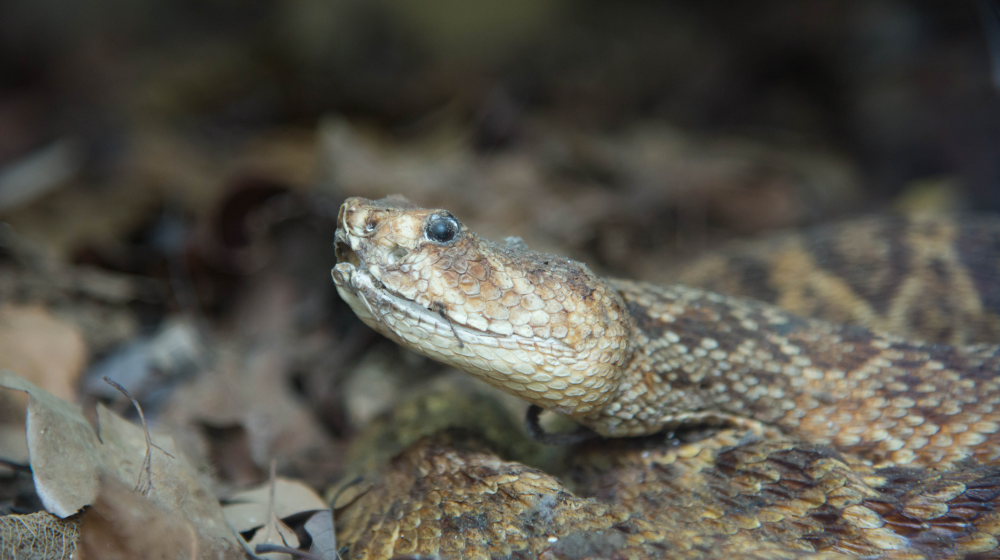How to Control Snakes Around Your Home

Removing items that provide shelter and eliminating common food sources for snakes around your house will help reduce the chances of encountering a snake.
Snakes, like other wildlife, need a suitable place to live and enough food to eat. If the area around your home checks these boxes, they may take up residence there.
You can reduce your chances of an unpleasant meeting with a snake around your home by following these tips:
- Remove nearby cover, including weedy growth and brushy fence rows. Piles of boards, firewood, rocks, bricks, leaves, and grass should be removed as well.
- Keep the lawn mowed to reduce hiding places.
- Inspect walkways and porches for cracks or holes that may provide shelter.
- Store firewood away from the house. Use a rack to elevate it at least 12 inches off the ground.
- Remove vegetation and be mindful of structures that might provide shelter for rodents, a common food source for snakes.
- Keep bird and pet food in a closed, sealed container.
- Close off access to areas under homes, barns, or storage sheds with packed soil, bricks, sheet metal, or small-mesh hardware cloth. Extend the material at least 6 inches below the soil surface.
- Check your home’s foundation for cracks or openings where snakes could enter. Seal any openings larger than one-quarter of an inch.
- Use latex caulk or insulating foam around wiring or pipes that enter the home from the outside.
- Seal cracks in masonry foundations with mortar.
- Repair holes in wooden structures with sheet metal or fine-mesh metal hardware cloth.
- Cover any open septic or treatment plant drainpipes with ¼-inch mesh hardware cloth.
Even if the area around your house is unattractive to snakes, always be mindful of these creatures as you work around your home. Most snakes that you encounter around your house are nonvenomous. However, it is possible to meet one of Mississippi’s six venomous snakes during your outdoor chores. The risk of a venomous snake bite is low, but it can happen. It’s important to know the difference in venomous and nonvenomous snakes. Extension Publication 3529, “Snakes Alive! How to Identify Hazardous Snakes” can help you learn to identify venomous snakes.
Keep in mind: No fumigants or toxicants are federally registered for snake control. Some repellants, including lime, sulfur, moth balls, and cayenne pepper spray, have been tested to see if they will repel black rat snakes. None of the tested repellants worked.
Extension Publication 2277, “Reducing Snake Problems Around Homes” includes more information about trapping snakes, legal status, removing snakes from inside buildings, and exclusion and habitat management practices.
Subscribe to Extension for Real Life
Fill in the information below to receive a weekly update of our blog posts.









